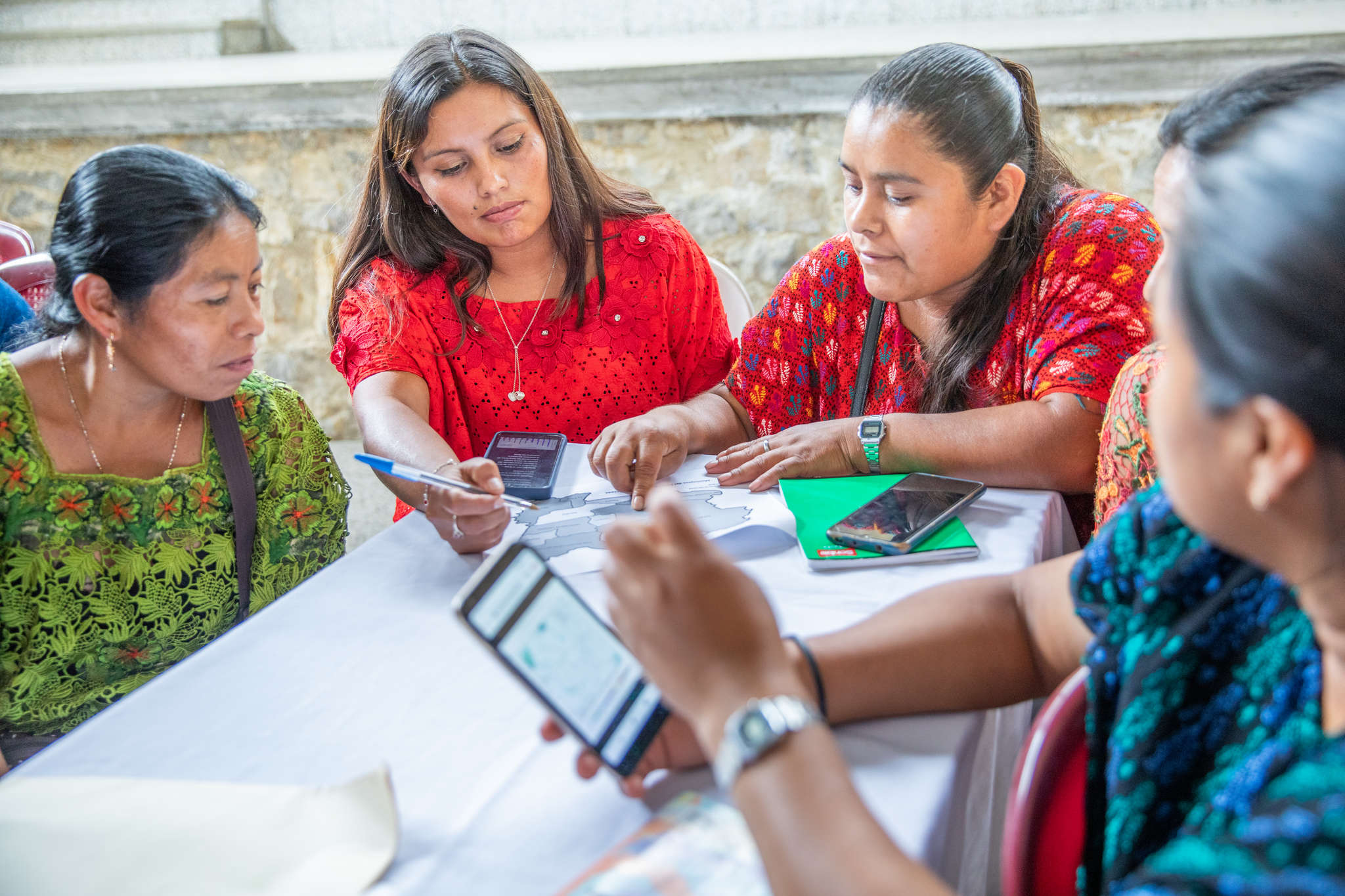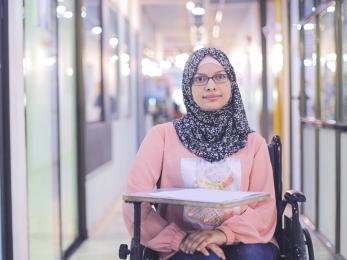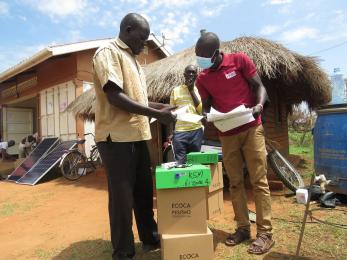Ask an expert: Innovative responses to the global refugee crisis

Thank you to Microsoft for sponsoring this Q&A for World Refugee Day. We appreciate your partnership.
For World Refugee Day, we asked our followers on Twitter to reach out with questions they have about how Mercy Corps and Microsoft are using innovation to address the global refugee crisis. We shared these questions with our experts.
About our panelists:
- Jane Meseck, Senior Director of Global Programs, Microsoft Philanthropies
- Michael Bowers, VP of Humanitarian Leadership and Response, Mercy Corps
- Myriam Khoury, VP of Innovation, Mercy Corps
- Ric Shreves, Senior Advisor, Technology for Development
Read their responses:
- Can you tell me more about why it is so important for refugees to own their identity and how new innovations in technology can help with this?
- How are refugees currently using technology to solve problems?
- Many refugees are not able to attain education, officials responsible for their well being have continuously swindled the funds meant for basic needs and the crime rate is high. How will technology help curb these problems and help stabilize countries?
- What technology is being used to provide electricity to refugee camps?
- How can cryptocurrencies improve transparency in the refugee crisis?
- How can money transfer tech like M-Pesa or other mobile phone-based transfers help improve the refugee crisis?
- How can blockchain help the global refugee crisis?
- What are the root causes of the refugee crisis and how can technology address them?
Can you tell me more about why it is so important for refugees to own their identity and how new innovations in technology can help with this?
Myriam: In its best form, digital identity is about making sure that people have the fundamental human right to have an identity. It is about access to services. It can help people who might otherwise tend to be overlooked, like women or girls. It also means we need to come together as a humanitarian community to make sure that information is being handled well. There are actors at work that don’t have the best interest of refugees or other people in mind.
Jane: Everyone should have control over their own identity and the information shared with it. Control over one’s identity allows for more services to be provided based on trusted and verified interactions.
Michael: One of the challenges is not to over silo these technology solutions. Obviously a lot of these refugees have distinct needs and they have a certain status protected under international law. However, the more scalable promotions of technology, including digital technology, meet additional pieces of need on the development continuum.
But overall, it is going to be a real challenge because at the core of any government is how it identifies what makes a citizen. There is obviously a lot of sensitivity from a governmental perspective on giving some super governmental kind of identity that trumps how you define yourself.
At the end of the day, we need political solutions to accompany these technological breakthroughs.
How are refugees currently using technology to solve problems?
Jane: Over 80% of refugees live in urban settings and technology has infused the lives of everyone, mainly through their mobile devices. Communications with separated family members, mobile payments, and social media are all vital services refugees, and others, now rely on for their daily lives.
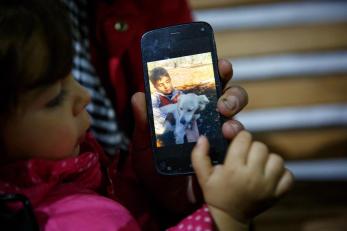
Myriam: People want to be the masters of their own destiny — they have that energy, they have spirit and drive. They want to make good choices for their family. They are using technology to be in touch with family and friends to get information about what their options are, to inform family about whether they are safe or not.
Michael: And a lot of that too is professional technologists and designers, especially developers, include refugees in that design so the end user is kept in mind.
In the early days, in Greece, the Balkans, with the flow of Syrians and other people, actually a lot of our understanding of what they really needed was just through a Whatsapp community group.
It’s a new issue for the humanitarian industry to really understand the user and their accountability to the user’s needs. Overwhelmingly, as Jane said, this is an urban population. People are living in mixed residences with host communities, or very squalid conditions in urban environments and not with the host communities. These are individuals and families that are not lining up to a soup line. They are actively living in urban and city environments so fitting into new ecosystems that they are in, we have to adapt around that.
Myriam: Refugees today are dealing with things that are more volatile than what refugees were dealing with 10 to 15 years ago. Rapidly changing policies, for example, affect them and affect their options.
Michael: Yeah, half of refugees are under the age of 18. They are growing up in the age of information and they are growing up with this increased violence. The picture that people have is that people flee temporarily and then go back home once war is concluded by international peace means is no longer true.
The new normal is protracted, international conflicts that are not resolved through normal mechanisms. The typical lifespan now of a refugee living outside of their home countries is over a decade at a minimum. So you have these young people who will now live their formative years not in a home or a place that they used to call their home. And so technology is something so completely different for them than what we used to know.
Myriam: Once they are displaced for 6 months, they are displaced for an average of 17 years.
I was just a conference a couple of weeks ago and these panelists at Stanford were talking about geospatial mapping. And I think one of the ambitions and hopes would be to try and start to anticipate where are there forces at play that would displace people in the coming weeks or months — around issues like climate change or what have you.
Many refugees are not able to attain education, officials responsible for their well being have continuously swindled the funds meant for basic needs and the crime rate is high. How will technology help curb these problems and help stabilize countries?

Michael: Education is an investment in youth and children. It’s not a tool to stabilize countries. It’s a right. It’s a clear investment in human potential. If it brings dignity and ability for young people to continue their education in that environment, then that is a clear priority of any responsible humanitarian actor.
The challenge is to help them do that in a way that doesn't cause conflict in that community or country so we don’t have a situation where one refugee child gets a better education.
What technology is being used to provide electricity to refugee camps?
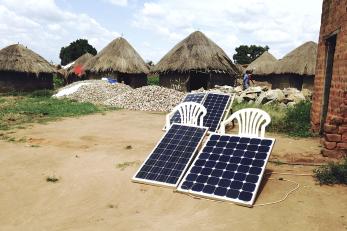
Myriam: We’re at the early stages of this, but for the refugee crisis in northern Uganda, we’re trying to look at market-based approaches trying to replace diesel with solar. We’re really engaging with the smart communities initiative to see how we can do this.
Michael: A more mature side of that is the work we’re doing in Afghanistan, which is just bringing more market-based solar options for communities in areas where the grid isn’t working or isn’t established.
How can cryptocurrencies improve transparency in the refugee crisis?
Ric: Cryptocurrencies show some promise in two areas: Asset preservation and the ability to transfer monies easily and at lower costs. The problem for refugees, in particular, is converting cryptocurrencies back into the local currency. The problem is significant and is a major barrier to the use of cryptocurrencies in these situations; it is largely why we have seen very few initiatives that look to place cryptocurrency directly into the hands of beneficiaries in general.
How can money transfer tech like M-Pesa or other mobile phone-based transfers help improve the refugee crisis?
Michael: Well it depends. On one level just the principle of unconditional cash transfers to the people gives dignity into the decision making. whatever format that occurs in, be it via mobile phone or voucher Mercy Corps’ own percentage of cash being sent through our humanitarian portfolio is at 51%.
M-Pesa is a great thing from a lot of East African nations and has different translators in different countries. But that doesn't mean that regulatory framework will stop you at that border, so one solution in one country doesn't mean it works in another. Currently, it's made our work ideally more efficient and scalable and more usable by people. But you know we still are challenged.
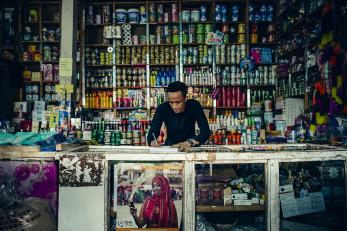
Myriam: It can be much more efficient. it can help stabilize or at least support local markets instead of shipping things from the outside; setting that community up and host communities can bolster relationships with those communities who are then engaged. We lean forward on technology, but we are always clear that it is in service of trying to to be more efficient and effective in serving needs. We are always trying to be a part of a community exchanging lessons about that.
How can blockchain help the global refugee crisis?
Ric: Blockchain is an infrastructure upon which applications are built. It is the applications that would be helping people, not blockchain per se. That said, some of the features that blockchain infrastructure provides are consistent with improved financial inclusion, better identity management, and the ability to preserve assets for refugees and IDPs. Applications built on the blockchain could be tailored to suit the needs of refugees and IDPs and at the same time provide increased transparency and better governance, making sure that the right aid made it to the right people.
What are the root causes of the refugee crisis and how can technology address them?
Michael: Root causes are what they sound like. There are a lot of roots that may cause people to either forcibly be displaced or voluntarily displaced. The overarching cause of the refugee crisis right now is violence and the extreme issues around people’s protection.
Beyond violence there are root causes that are much bigger in terms of environmental changes, issues around their economic security opportunities. They vary. There is no one simple solution to every refugee crisis. You need a holistic solution that looks at a lot of different factors.
Can technology address them? Of course. But just like technology is not the answer in our normal lives, it is not an answer for everything in refugees’ lives. Can it help provide valuable information to help people make smarter, safer decisions? Break the language barrier quicker so people understand each other more effectively? Help people understand their identities beyond papers? Yes, possibly.

It can help people establish communications and access to funds and resources that increasingly need to be mobile. So rather than try to bring a person to X location to receive X services, they can perhaps use their mobile phone, receive instructions on how to redeem the value of what they just received at a store or another service provider. Technology has a lot of ability to provide those core issues, which is dignity and looking at how they best can be protected in their journey.
For the last several years, we have been working very intensely at modulating to the specific context. For instance, in the Mediterranean crisis, a lot of people were falling through fairly quickly — not necessarily staying in one place to another — so with the help of Google, the IRC and others, Mercy Corps helped create a platform for people’s mobile phones so they could understand where they should go to receive accurate information on their journeys, as well as how to get legal help and other services. That was done in the identified languages that we received in terms of the demographics of people — so not just Arabic, but also Pashu and other languages.
That is just a very simple example and that is a key point for any technology adaptation for emergencies or relief activities — be it refugee or otherwise — keep it simple and keep it as accessible as possible to what has been proven technology.
When you are trying to service thousands and thousands of people on scale, we definitely need to bring to bare technologies that are proven, safe, that keep their identities and data safe, and provide the most simple way for people to receive that. So we don’t try to bring technology in a way that we don’t know how to use effectively, or is not scalable or cost-effective.
